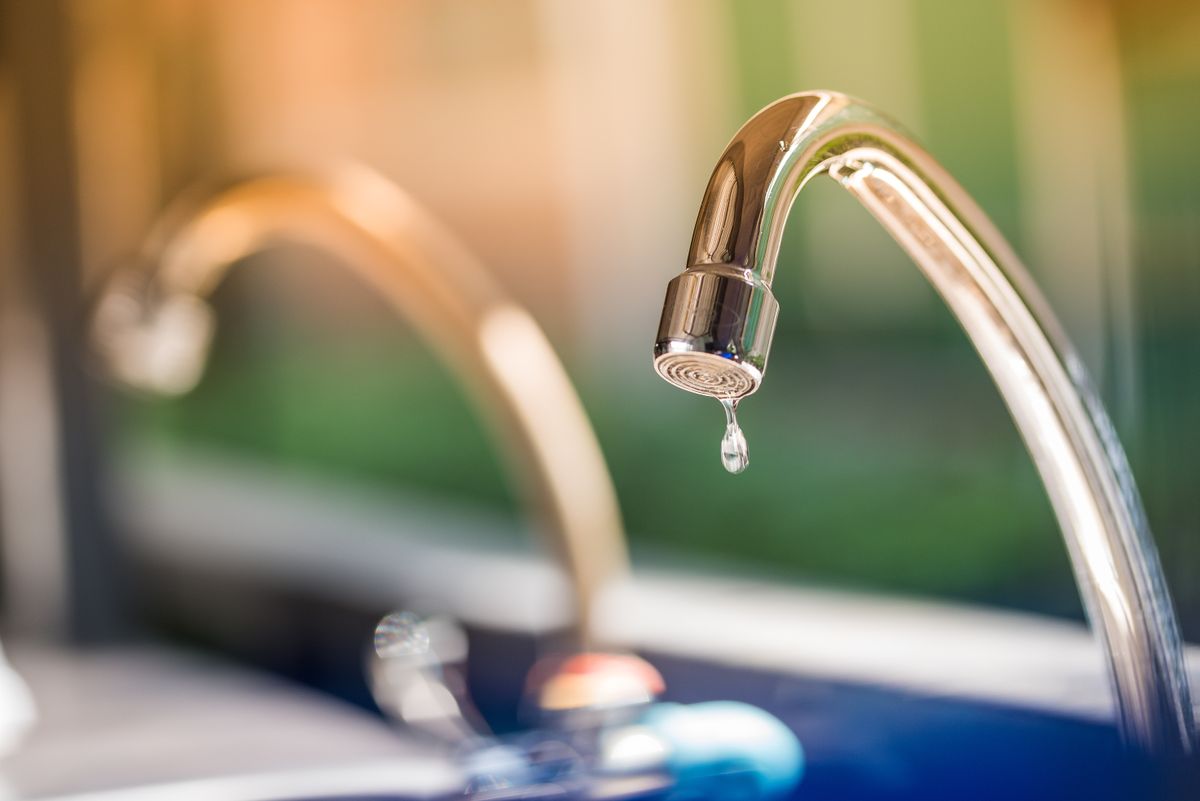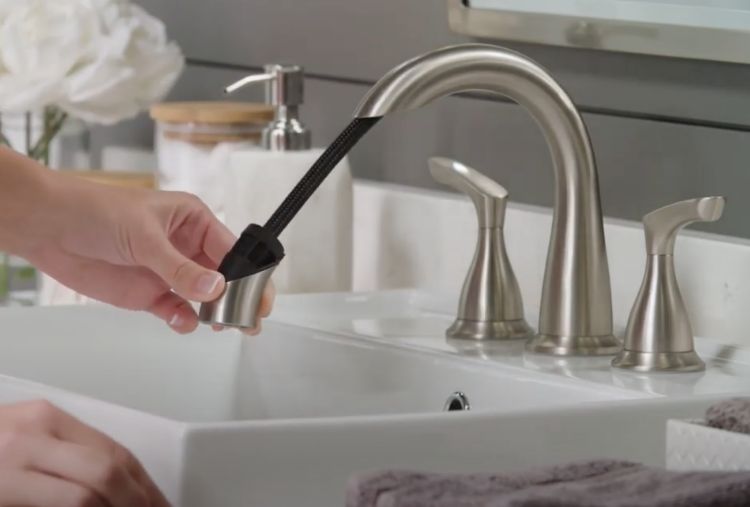Our Explanations Behind Addressing a Faulty Faucet
Our Explanations Behind Addressing a Faulty Faucet
Blog Article
This great article listed below involving Why It's Important to Fix Leaky Faucets is without a doubt remarkable. Read it for your own benefit and see what you think about it.

Leaking taps might appear like a small inconvenience, but their influence surpasses just the inconvenience of the sound. From drainage to incurring unneeded monetary costs and wellness threats, ignoring a trickling tap can cause different effects. In this write-up, we'll explore why it's vital to resolve this typical home problem immediately and efficiently.
Wastefulness of Water
Environmental Effect
Leaking faucets add substantially to water wastefulness. According to the Environmental Protection Agency (EPA), a single tap leaking at one drip per secondly can squander greater than 3,000 gallons of water annually. This not only pressures water sources yet additionally affects ecological communities and wild animals depending on them.
Financial Prices
Boosted Water Expenses
Beyond the environmental effect, leaking taps can blow up water bills significantly. The collected wastage with time equates into greater energy expenditures, which could have been stayed clear of with prompt repairs.
Potential Residential Or Commercial Property Damage
In addition, extended trickling can lead to damage to fixtures and surface areas bordering the tap. Water buildup can cause staining, rust, and even structural problems if left ignored, leading to additional repair service prices.
Health and wellness Issues
Mold and Mold Growth
The continuous presence of wetness from a trickling faucet produces a perfect setting for mold and mildew and mildew growth. These fungi not just endanger interior air quality however likewise present wellness threats, particularly for individuals with breathing conditions or allergies.
Waterborne Diseases
Stagnant water in dripping taps can come to be a breeding place for microorganisms and various other virus, boosting the danger of waterborne illness. Contaminants such as Legionella bacteria prosper in stationary water, possibly causing major diseases when ingested or inhaled.
Do it yourself vs. Expert Repair work
Pros and Cons of DIY Fixing
While some may attempt to fix a leaking faucet themselves, DIY repair work come with their own set of obstacles. Without correct knowledge and tools, do it yourself attempts can exacerbate the problem or cause incomplete fixings, extending the trouble.
Advantages of Employing an Expert Plumber
Working with a specialist plumber makes certain that the underlying cause of the trickling faucet is attended to efficiently. Plumbings have the know-how and devices to diagnose and repair tap concerns effectively, saving time and lessening the danger of additional damage.
Step-by-Step Guide to Dealing With a Dripping Faucet
Devices Needed
Before attempting to repair a trickling tap, gather the necessary devices, consisting of an adjustable wrench, screwdrivers, replacement components (such as washers or cartridges), and plumber's tape.
Typical Faucet Issues and Their Solutions
Identify the type of tap and the particular issue creating the drip. Common troubles include worn-out washing machines, rusty shutoff seats, or malfunctioning O-rings. Refer to manufacturer guidelines or on-line tutorials for step-by-step advice on repairs.
Safety nets
Routine Maintenance Tips
To stop dripping taps, carry out routine maintenance such as cleaning up aerators, evaluating for leakages, and changing worn-out components immediately. Additionally, consider installing water-saving gadgets or updating to extra efficient fixtures.
Value of Prompt Fixes
Addressing dripping taps as quickly as they're seen protects against additional water waste and prospective damage, eventually conserving both water and cash in the future.
Influence On Residential Or Commercial Property Worth
Perception of Well-Maintained Building
Maintaining a residential property in good condition, consisting of resolving maintenance concerns like dripping taps, boosts its viewed value and value among possible customers or tenants.
Influence on Resale Value
Qualities with properly maintained plumbing components, consisting of taps, command greater resale values in the real estate market. Addressing dripping taps can contribute to a positive impression throughout building assessments and negotiations.
Ecological Obligation
Individual Payment to Preservation
Taking obligation for repairing trickling taps straightens with wider efforts toward water preservation and environmental sustainability. Every individual's activities jointly make a considerable influence on protecting priceless sources.
Lasting Living Practices
By focusing on prompt repair work and embracing water-saving behaviors, people contribute to sustainable living methods that benefit both existing and future generations.
Final thought
Attending to a leaking faucet goes beyond mere comfort; it's a necessary step towards conserving water, decreasing monetary costs, and safeguarding wellness and residential or commercial property. Whether through do it yourself repair work or professional aid, acting to repair leaking faucets is a small yet impactful means to advertise responsible stewardship of sources and contribute to a much healthier, extra sustainable future.
How to Fix a Dripping or Leaky Faucet
A leaking faucet is one of the most common problems that homeowners encounter, but it being commonplace doesn’t make it any less annoying. The constant drip drip drip of a leaking bathtub faucet, showerhead, or sink tap can disturb your home’s serenity. Left neglected, a dripping faucet can also result in higher water bills and discoloration or mold growth in your sink or plumbing fixtures.
Fortunately, you don’t have to be a trained plumber to know how to stop a dripping faucet. With some basic tools, replacement parts, and a little patience, leaky faucet repair is a breeze. In this article, we’ll explain what causes dripping faucets and how you can fix them.
What Causes a Leaking Faucet?
Kitchen and bathroom faucets come in all manner of designs, but most involve some combination of valves, O-rings, seals, and washers. The O-ring is usually the weakest link, but any one of these pieces can wear down over time. Heat, moisture, temperature fluctuations, minerals, mold, and movement can contribute to warping and corrosion, breaking the watertight seal. This just comes with the territory of being a homeowner. Everything is always subject to wear and tear, and some component parts of your appliances and fixtures need to be replaced on occasion. At least replacement O-rings are cheap!
More rarely, dripping faucets can be a symptom of excessively high water pressure. Were this the case in your home, you would probably notice that the leak is not isolated to one faucet. Water pressure issues are harder to resolve on your own. We recommend contacting a professional plumber if you suspect your water pressure is too high.
How to Fix a Dripping Faucet
Pipe wrench or monkey wrench Allen wrench set Screwdrivers Old towel or rag Shut off the water.
Before you do anything, you need to turn off the water to keep from drenching your kitchen or bathroom. You should find a valve under the sink and against the wall. Once you’ve turned this valve, try turning the faucet on to confirm that the water source has been cut off.
If you can’t locate your local valve for the faucet you’re working on, you can always shut off the water to the house at the main valve. Of course, this will prohibit anyone from using the sinks, showers, or toilets while you’re working on the faucet that’s giving you trouble.
Plug or block the drain.
You’ll be disassembling the faucet and removing some small bits of hardware. Plug the drain with a stopper or rag to avoid the possibility of a small screw falling into your P-trap.
Take apart the faucet assembly.
There are several varieties of kitchen and bathroom faucets, each with its own manner of assembly. For detailed instructions on how to disassemble your faucet, you can refer to the fixture’s manual or contact the manufacturer. If you know whether you have a ball, disc, cartridge, or compression faucet, you can find detailed schematics online.
In general, you need to begin by removing the faucet handles. You might notice a small screw that you’ll need to remove with a screwdriver or Allen wrench. If you don’t see any visible securing hardware, it’s likely hidden under a decorative cap that can be unscrewed or popped off with flathead screwdriver.
Remove each piece methodically, consulting a schematic when necessary. Take notes or arrange the pieces in such a way to make it easier to correctly reassemble the faucet later.
Remove the cartridge.
Once you’ve removed the handles and securing hardware, you should be able to remove the valve cartridge or stem. Some cartridges will slide right out. Other faucet models will require you to loosen a nut with a pipe wrench before you can remove the valve stem.
Examine the exposed hardware.
With the cartridge or stem removed, inspect the component parts. Check the rubber O-rings for wear and tear. Also examine the seat washer for corrosion or other damage. These pieces are usually the responsible parties for a dripping faucet, but it’s worth inspecting the other component parts while you have the faucet disassembled.
Find replacement parts.
Once you’ve identified which faucet component has failed, find an identical replacement. Your local hardware store should have O-rings, seat washers, and other standard components in stock. If you have a luxury or uncommon faucet, you may have to contact the manufacturer for a replacement part.
It’s a good idea to take your old parts with you to the hardware store so you can compare them with the store’s inventory and be sure you’re purchasing the correct replacement.
Reassemble the faucet.
With your new parts in hand, reconstruct the faucet and handles. Don’t be tempted to overtighten screws or nuts. You might think this could create a better seal, but it can instead damage or bend a delicate part of the assembly and create a new problem for you.
Turn on the water and test the faucet.
The only thing left to do is test your work. Unplug the sink, turn the water back on, and try the faucet. Congratulate yourself on a job well done!
https://www.libertyhomeguard.com/how-to-fix-a-dripping-or-leaky-faucet/

I discovered that blog entry on What Causes Leaky Faucets & How To Fix Them when doing a search on the search engines. Sharing is nice. Helping others is fun. I am grateful for being here. Please stop by our site back soon.
Report this page